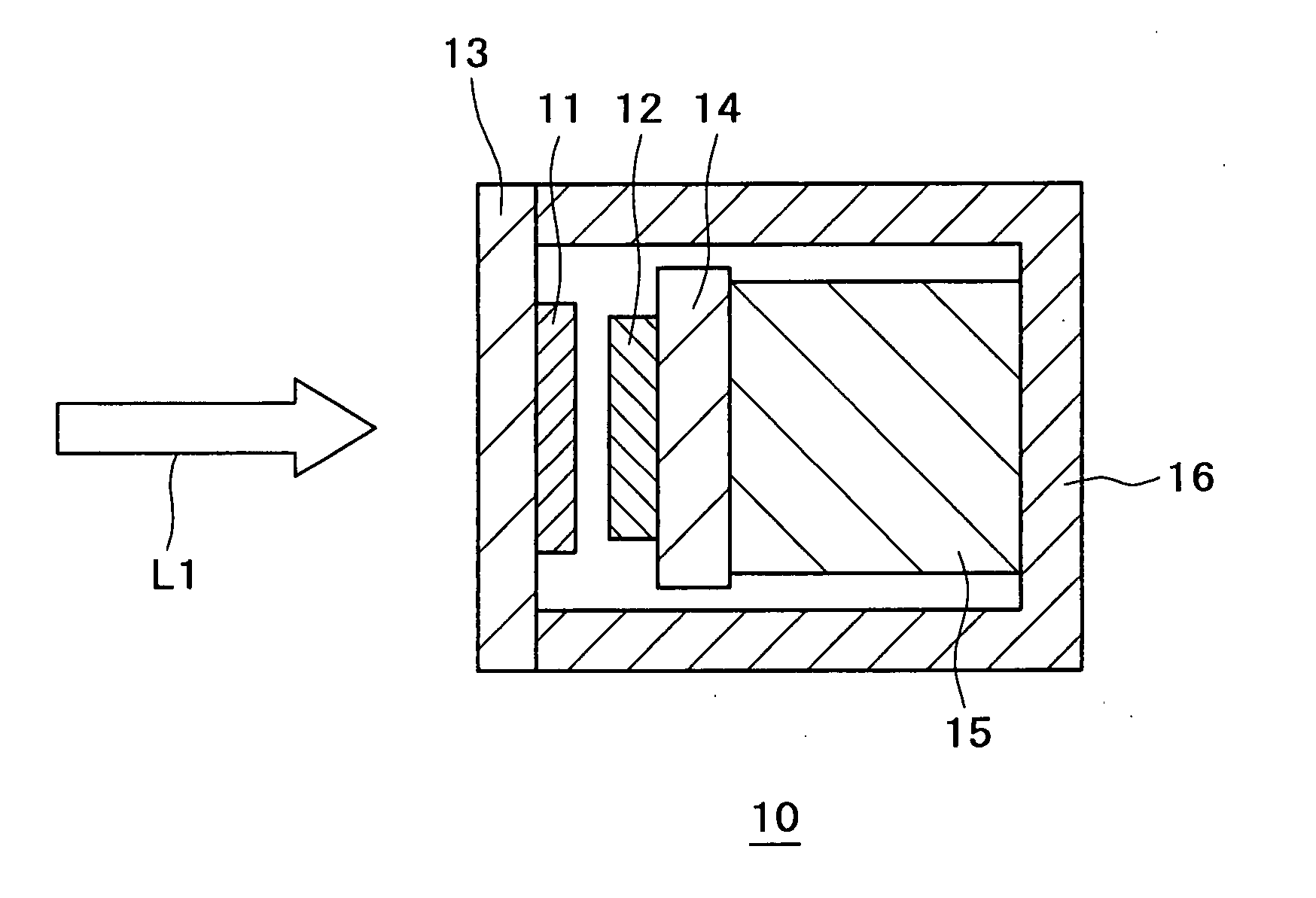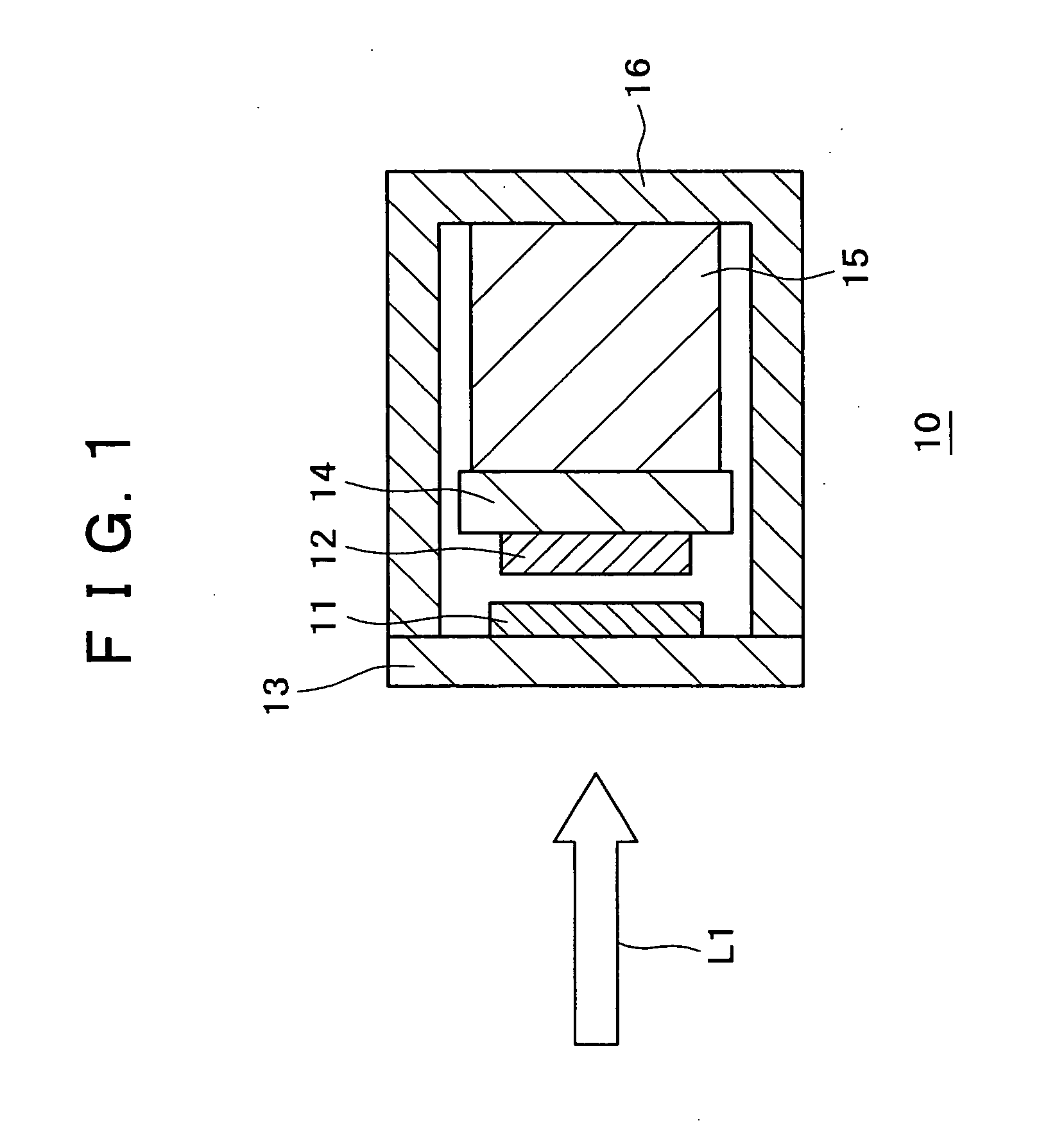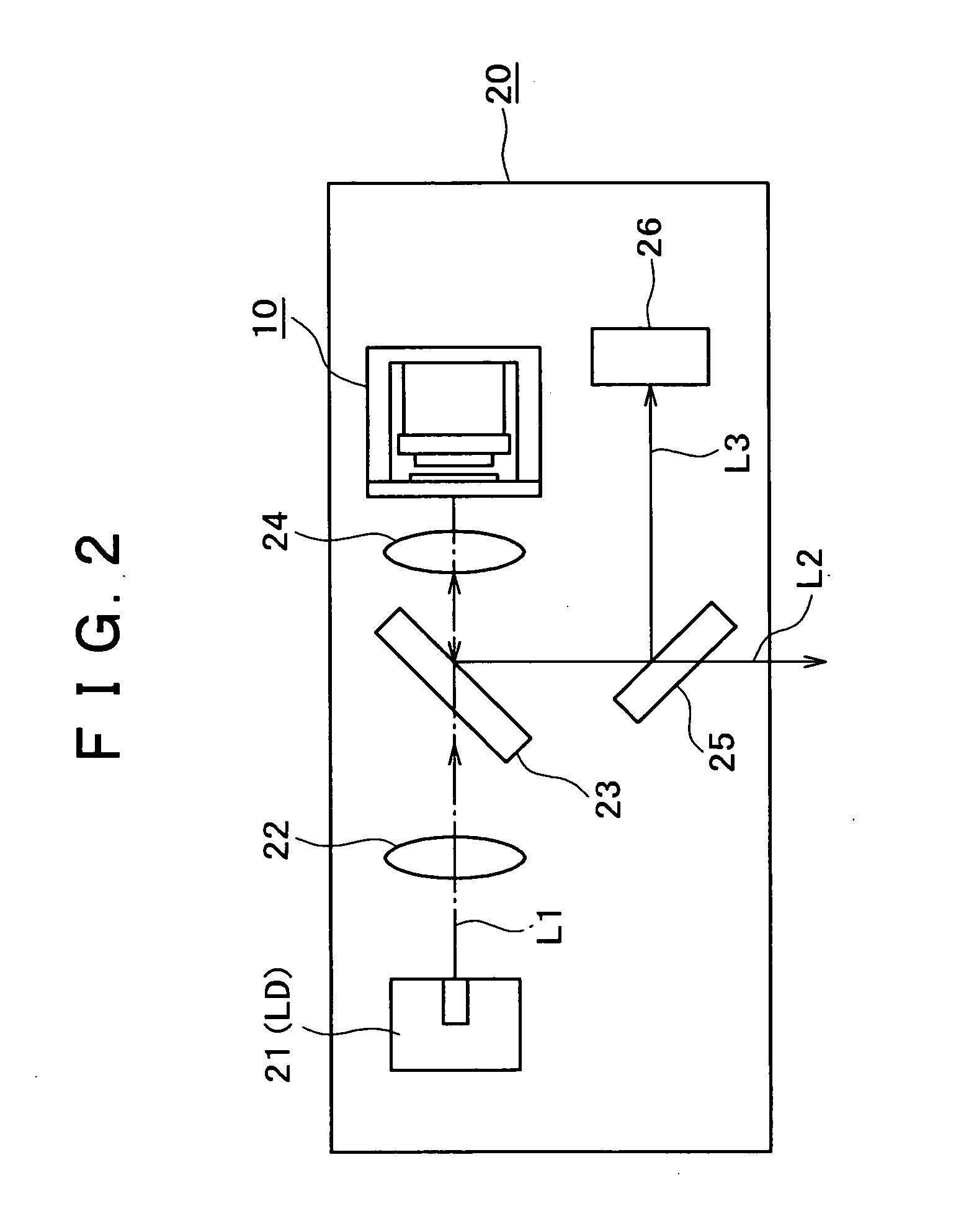Method of stabilizing laser beam, and laser beam generation system
a laser beam and laser beam technology, applied in the direction of laser details, active medium materials, electrical devices, etc., can solve the problems of unfavorable laser beam stabilization, so as to maintain the characteristic in a good condition for a long time, enhance reliability, and maintain constant characteristics
- Summary
- Abstract
- Description
- Claims
- Application Information
AI Technical Summary
Benefits of technology
Problems solved by technology
Method used
Image
Examples
Embodiment Construction
[0072] Now, as embodiments of the present invention, one embodiment of the laser beam generation system and the method of stabilizing a laser beam in the laser generation system will be described.
[0073] First, FIG. 1 schematically illustrates the configuration of a laser oscillator constituting the laser beam generation system according to this embodiment.
[0074] The laser oscillator 10 has a structure in which a laser medium 11 and an SBR (Saturable Bragg Reflector) 12 are disposed opposite to each other and are attached respectively to support members 13 and 14 which are formed of quartz, sapphire or the like.
[0075] As the laser medium 11, for example, Nd:YVO4, Nd:YLF (YliF4) and the like can be used. The oscillation wavelengths of Nd:YVO4 are 1064 nm and 1340 nm, while the oscillation wavelength of Nd:YLF is 914 nm.
[0076] Other than these, optical crystals or glasses doped with a rare earth element such as Nd, Er, Yb, Sm, and Pr can also be used.
[0077] As has been mentioned a...
PUM
 Login to View More
Login to View More Abstract
Description
Claims
Application Information
 Login to View More
Login to View More - R&D
- Intellectual Property
- Life Sciences
- Materials
- Tech Scout
- Unparalleled Data Quality
- Higher Quality Content
- 60% Fewer Hallucinations
Browse by: Latest US Patents, China's latest patents, Technical Efficacy Thesaurus, Application Domain, Technology Topic, Popular Technical Reports.
© 2025 PatSnap. All rights reserved.Legal|Privacy policy|Modern Slavery Act Transparency Statement|Sitemap|About US| Contact US: help@patsnap.com



